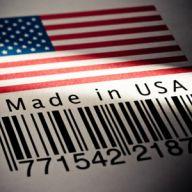A decade ago, it was a no-brainer. The cheap cost of labor in China made outsourcing the natural choice for many manufacturing companies in the U.S. But fundamental shifts in many areas of Chinese labor policy, transport, and logistics have combined with global factors and positive evolutions in domestic manufacturing to produce an incentive for a growing number of U.S. manufacturers to bring operations stateside again.
How have these shifts impacted the plastic product industry? The picture is mixed. A number of medical product manufacturers are finding growing markets in Asian countries, making it more practical to establish factories closer to those customers. However, many other plastics manufacturers, including makers of medical devices, are finding cost savings, improved quality, and reduced time to market by “reshoring” — a popular term for locating factories back home in the U.S.
These are a few of the factors impacting the withdrawal of manufacturers from China:
Wage Inflation
Since China became a member of the World Trade Organization in 2001, and especially since the passage of the Contract Labor Law in 2008, wages in China have risen on average 15 to 20 percent annually. Worker unrest in recent years has given rise to independent labor unions that better represent the interests of employees, giving them greater leverage for higher wages and previously nonexistent benefits.
Even though the overall direct cost of Chinese labor is still drastically low compared with the U.S., the relatively low wages are often outweighed by other factors that impact the total cost to produce.
Rising Freight Costs
The amount of money it takes to transport goods to and from China is rising, in large part due to soaring fuel prices for both ocean freight and air shipment. Factor in the crawling time-to-market intervals compared with making goods in North America, and the price of overseas transport is rapidly becoming cost prohibitive for an ever-increasing number of U.S. companies.
Long-Distance vs Face-to-Face
Strict FDA and environmental regulatory compliance for medical products and food containers is difficult to maintain from thousands of miles away, as is adherence to tight engineering specifications. This, combined with the vast time difference and language barriers, often causes delays in problem-solving and holds up production. Quality control becomes an issue, with increased hours and personnel required for inspection, as well as the added cost of having to scrap defective parts if a problem is not detected early in the manufacturing cycle.
Rise of American Automation
North American industries have invested in automation and robotics at an accelerated rate in recent years. Precision machines are vastly improving efficiency and speed of mass production and packaging, while providing new opportunities to more tightly control quality of domestic operations. With robotics and automatic conveyer systems working round the clock, U.S. manufacturers are reducing labor costs without sacrificing quality.
Future Outlook
As manufacturers move more operations home from overseas, we expect to see increases in domestic job creation—especially in the area of skilled labor. We also expect this new domestic agility and abundance to result in the emergence of new markets.
The combination of accelerated technological advances in U.S. manufacturing, and a rapid reduction of the cost advantage China once offered, appear to be coming together in perfect alignment for a potential renaissance of American industry.

